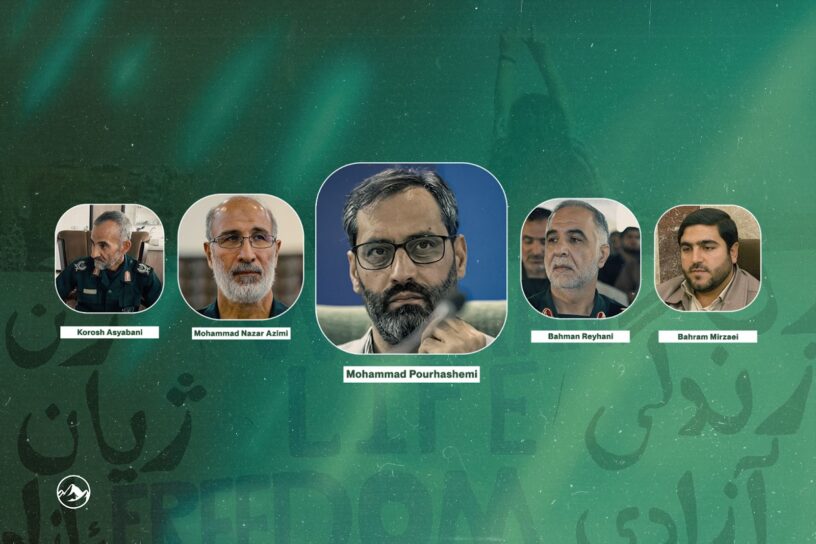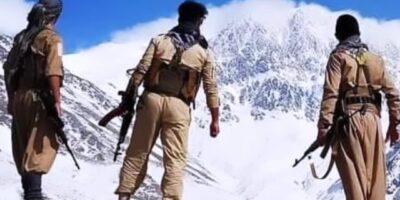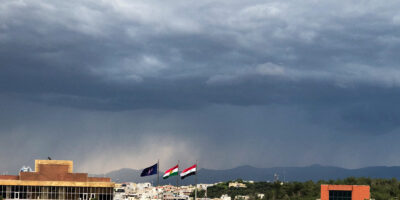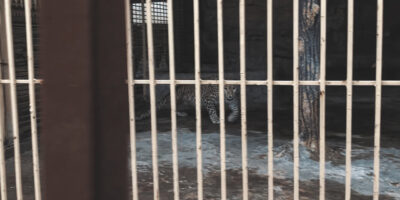On November 21, the town of Javanrud at the foot of the Zagros mountains in western Iran woke up under a bright blue sky to say farewell to a teenage boy and a teacher who had been killed by state security forces during protests the night before. What they did not know was that the two deaths signaled a murderous change in how the authorities plan to deal with protesters who have rallied in the streets since September 16, when Tehran’s morality police killed a Kurdish woman, Zhina (Mahsa) Amini.
By the end of the day, six more people were shot dead by members of the Islamic Revolutionary Guard Corps (IRGC) and dozens more were wounded. The massacre showed the state’s willingness to kill protesters in cold blood in an effort to keep them off the streets.
Over the course of three months, 506 people have been killed across Iran, including 69 children, according to Human Rights Activists in Iran (HRANA). As of today, 120 Kurdish protesters and bystanders have been killed, including several who died under torture, according to the Kurdistan Human Rights Network.
The burials are galvanizing events and security forces often try to disperse the bereaved with tear gas. Occasionally, mourners themselves are killed.
The Kurdish areas had already been on edge. Almost the entire region had taken to the streets night after night.
The protests have brought dramatic changes to cities and towns in the Kurdish region, which is known as Rojhelat. In Mahabad city’s Bari Shilanan neighborhood, youths not only took over and barricaded streets at night, but in broad daylight as well. Beamed around the world, the images gave the impression that the Iranian government was losing control of the Kurdish areas.
These regions are highly symbolic. Many top IRGC commanders started their careers battling Kurdish peshmerga fighters in the 1980s and the force has not forgotten how Kurds took over the streets during a period that threatened the existence of the nascent Islamic Republic. Peshmerga from Kurdish opposition groups killed some of their best commanders. Iranian officials have accused these groups, which are based in the neighbouring Kurdistan Region of northern Iraq, of being behind the current unrest and have carried out cross-border attacks using mid-range ballistic missiles and kamikaze drones. Inside Iran, the IRGC continues its brutal crackdown on the Kurdish population, regardless of whether the victims have any connection with the opposition parties or the protests.
After at least 25 protesters were killed during the preceding five days, people took to the streets in several Kurdish cities and towns on the night of November 20. Dramatic videos published on social media showed protesters fleeing into alleys and side streets as the IRGC fired randomly at the crowds. In Piranshahr, at least two protesters were killed. The sister of one of those killed, Taher Azizi, jumped on a vehicle and waved at protesters who were shouting “Martyrs never die.” In Javanrud, teacher Erfan Kakaei and 16-year-old Bahadin Weisi were killed and several others were wounded. Initially, there were reports that Weisi’s brother was also killed, but it was later confirmed that he was alive, although injured.
When morning broke in Javanrud, several thousand people marched under that bright blue sky to the graveyard to say farewell, chanting as they walked. As it had been for months, “jin, jiyan, azadi,” which translates as “woman, life, freedom,” was the slogan that rang out across the countryside. Youths tore down posters related to the Iranian government.
The town’s population mainly belongs to the Jaff tribe, one of the largest Kurdish tribes whose home area straddles the Iran-Iraq border. The people of Javanrud have a reputation as fierce, hardworking and highly hospitable. An engine of Kurdish nationalism, they have taken part in rebellions in both Iraq and Iran over the past hundred years. They are now again at the frontlines of a new movement, demanding their rights.
While Iranian security forces had used heavy-handed tactics over the previous two months, in particular against Kurds in the west and Baluchi protesters in the southeast, the violence that they would unleash in Javanrud that day was different. The IRGC had no qualms about using automatic and semi-automatic rifles to kill unarmed civilians.
Videos captured at the scene showed protesters as they were shot and fell to the ground. Other footage showed bodies scattered across the streets as screams and gunfire echoed across the town. By the end of the bloodshed, at least six protesters had been killed and dozens more wounded. Hundreds of people were arrested.
Activists urged residents to rush to hospitals to give blood for the wounded. Among those who answered the call was a well-known Kurdish folk singer, who sobbed as he donated blood.
The nakedness of the violence shook protesters and activists. Rebin Rahmani of the Kurdistan Human Rights Network declared that the IRGC had started a new phase of the crackdown and wanted its brutality to be on full display in order to scare people into staying away from future protests.
But who were the people behind this massacre? Who ordered the killing of protesters in such a flagrant manner? Who are the commanders ascending the ranks of the IRGC on the bloody backs of the Kurdish population?
The IRGC and its volunteer Basij militia are the main executioners of Iranian government policy in Javanrud.
The top civilian in charge of security in the province of Kermanshah is Mohammad Pourhashemi, who is deputy governor for security and political affairs. In recent weeks, Pourhashemi has described the protesters as “rioters” and spoke on Iranian TV during a segment in which protesters were described as “dangerous Daesh terrorists,” referring to Islamic State (ISIS) militants. He is the person that draws up the policy to deal with protests and orders its implementation. He is also responsible for coordination between intelligence, security and military forces in the province.
As the protectors of the revolution, it falls to the IRGC to execute the policy drawn up by the deputy governor, in consultation with top security and intelligence bodies. After Aziz Jafari took charge of the Guards in 2007, he established ten regional commands of IRGC ground forces, which take charge of security across Iran in times of crisis. Each regional command covers several provinces.
The IRGC’s Najaf Ashraf West Regional Command is responsible for the provinces of Kermanshah, Hamedan and Ilam and the unit is currently led by Mohammad Nazar Azimi.
The regional command in turn is responsible for IRGC Nabi Akram Headquarters, which oversees security in Kermanshah through branches of the Guards in towns and cities across the province. Nabi Akram IRGC HQ is currently led by Bahman Reyhani, who was in charge of the Basij in the province prior to his current posting. Reyhani described the November 2019 protesters as “rioters” backed by foreign powers who had come to topple the regime. “With the vigilance of the Basij forces, the disturbance was concluded within 48 hours,” Reyhani said at the time. The nation-wide protests were triggered by a fuel price hike.
One of the units that is in charge of the towns of Paveh, Ravansar and Javanrud is Shahed Kazemi Headquarters, which is led by Korosh Asyabani. He took part in the 1988 attack on Halabja at the end of the Iran-Iraq War and was photographed with then-president Ali Khamenei. Asyabani is also deputy commander of the Najaf Ashraf IRGC Command and was wounded several times during the 1980-88 war.
As head of the IRGC in Javanrud town, Colonel Bahram Mirzaei reports to Asyabani. As such, he is the commander directly responsible for conducting the massacre on November 21.
“The people of Javanrud with their insight in these unrest ruined the conspiracies of the enemy,” Mirzaei said on October 4.
A month after the events in Javanrud the scale of the violence is not yet clear. Kurdistan Human Rights Network published a video showing IRGC guards openly firing on protesters, despite multiple government claims that security forces use plastic bullets and paintballs. The brazen shooting suggests the IRGC is prepared to do whatever it takes to preserve its revolution.




